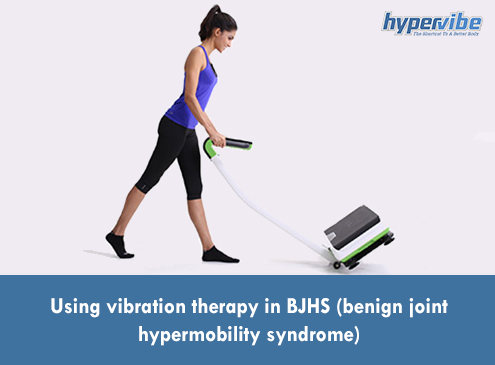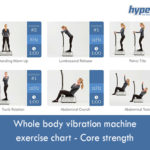
Benign joint hypermobility syndrome (BHJS) is a common issue in children and young teens and adults, affecting 4-13% of the population at some degree. It is a syndrome in which the joints are looser than normal and become swollen or painful after exercise. Although this is not a condition, it can be disturbing and can interfere with one’s ability or desire to perform various types of physical activity.
BJHS appears in individuals who aren’t affected by systemic rheumatic diseases like rheumatoid arthritis, lupus or Sjögren’s syndrome, and is more common in people with a family history of this issue, so it is thought to be an inherited connective tissue disorder.
More common in females and more likely to affect Asian and Afro-Caribbean races, BJHS tends to lessen as one ages, and can manifest differently from one sufferer to another. Some accuse only mild joint pain while others can experience not only hypermobility of joints but also degenerative changes and joint dislocation.
Hypermobile means that the joints have an abnormally large range of motion, so the affected individuals may be able to move their limbs into awkward positions. This increased flexibility can be beneficial for some people, such as gymnasts or dancers, but it may also manifest to unpleasant symptoms.
It is not uncommon for people with hypermobile joints to experience muscle stiffness and pain, clicking joints, fatigue, frequent sprains and recurrent injuries, or even digestive issues like irritable bowel syndrome or constipation. Also, stretchy and thin skin which bruises easily, dizziness, weakness of the abdominal muscles, varicose veins, anxiety and even cardiac issues and fainting may occur.
As for the causes of this syndrome, joint hypermobility is inherited in most cases, so genes and genetic changes are involved. More specifically, genes that are responsible for producing collagen, the protein that helps glue tissues together. But BJHS can also be caused by underlying conditions affecting connective tissues, such as the Ehlers-Danlos syndrome (EDS) for example, or the Down syndrome.
In most cases this syndrome doesn’t cause serious issues so it doesn’t require special treatment or support, but the manifestations can be disturbing, so a combination of physiotherapy and controlled exercise may be recommended. Some therapies for managing pain and swelling may also be needed, but this depends on one’s lifestyle and exercise habits.
People with hypermobile joints have a higher risk of injuries like sprains or dislocations, so they may need to avoid some forms of exercise and they should definitely treat any short-term injury as it arises, to avoid complications.
BHMS may be associated with acute pain as a consequence of an injury or chronic pain due to prolonged pain in the spinal cord or peripheral nerves. It may also lead to poor spatial awareness and proprioception (awareness of joint position), therefore increasing the risk of injury. In females, the symptoms may get worse around the menstrual period.
Now, before seeking any sort of treatment for this syndrome, you should make sure it is indeed hypermobility and not other issue that may affect your joints or bones even more in the future, if left untreated. JHS can be silent and asymptomatic for several months, and the symptoms usually developed over a long period, with no obvious trigger.
The most affected areas are the leg joints, knees and elbows, and the hypermobility tends to lead to stiff and tight muscles, the calves and thighs being often affected. Swelling of the affected joints may worsen after exercise but also during the late afternoon and night, and may go away without any particular treatment, within hours.
For those suffering from BJHS, exercise is the best treatment option, as it helps strengthen the muscles around the loose joints, keeping them in place. Some doctors may recommend wearing braces or splints to protect the affected joints, especially during exercise or other activities that involve lifting wights or put more pressure on the hypermobile joints.
Medications aren’t helpful for fixing the loose joints, but they may be useful – anti-inflammatory drugs mostly – for relieving the pain and swelling after working out.
People with benign joint hypermobility syndrome may benefit from whole body vibration therapy for pain reduction as well as for strengthening the muscles and reducing the range of motions of the affected joints. WBV is safe and has positive effects when done correctly; it is less likely to cause injuries than conventional strength or weight lifting exercises, which are often avoided by people with this syndrome.
WBV therapy helps by strengthening the muscles and ligaments and providing more stability to the joints. It helps by improving proprioception, balance and coordination, and relieving the stress and pain caused by BJH. In a healthy body, the muscles, ligaments and fascia connect all the elements of a joint and keep them together, ensuring the stability and normal functioning of the joint.
In BJHS however, these elements are affected and the transmission of information from the brain to the joints is altered as well. The hypermobility of joints leads not just to movement dysfunction but also to overworked muscles, which become painful. The stress on muscles and joints increases and the whole joint complex becomes dysfunctional.
Whole body vibration helps in a number of ways. First, it increases local circulation, restoring the normal blood flow and oxygen supply to the muscles that surround the joints. The fascia and muscles receive more water, oxygen and nutrients, and this helps them heal faster and perform better. Also, the recovery of the damaged tissues takes place faster.
Then, WBV helps by improving muscle stability and flexibility. The excessive stimulation of muscles as a result of whole body vibration leads to increased muscle tone, and helps in improving the support and stability for joints that aren’t properly supported by the ligaments. The muscles that have become too tired and shortened as a result of the constant stress and constant attempt to stabilize the joints can see some relief and become more flexible with vibration therapy.
The stretching movements on a vibration machine can help normalize the length of these muscles and restore their function. The muscle contractions created by WBV assist the lymphatic drainage as well, and improve the removal of excess fluids from the body, helping to prevent swelling. Better lymphatic mobility means better cell health and a faster recovery of damaged tissues.
Above all these, WBV helps by restoring the normal communication between brain and joints. It stimulates the proprioceptive system, contributing to a better control and stability of the joints.
Have something to add to this article? Comment below or join our Facebook community and share your thoughts there.

Updated on: 08.09.2021 The lymphatic system is involved not only...

Stress can make you gain weight – we’ve heard this...

Various theories exist to answer this question. As you will...

Our series of whole body vibration machine exercise articles continues...

Both rebounding and jumping on a trampoline are excellent ways...